Mobile shop flex design cdr File
Introduction to Mobile Shop Flex Design
The retail landscape has evolved significantly with advancements in technology and design methodologies. One of the innovative concepts gaining traction is mobile shop flex design. This term refers to a flexible design approach that retailers employ to create adaptable, visually appealing store layouts, particularly for mobile and pop-up shops. The primary importance of mobile shop flex design lies in its capacity to enhance customer engagement and adapt to varying consumer preferences without the need for extensive renovations or permanent fixtures.
Flex designs involve the use of versatile components that can be easily repositioned or modified, allowing retailers to respond swiftly to changing market demands. By integrating dynamic and functional elements into the physical retail space, businesses can create an inviting environment that encourages exploration and interaction. This adaptability not only elevates the customer experience but also optimizes the use of available space, potentially leading to increased sales and customer satisfaction.
The advantages of utilizing flex designs in mobile shops are numerous. For instance, such designs can facilitate effective product displays, streamline workflow for staff, and create a more organized shopping atmosphere. Furthermore, they allow businesses to implement a theme or branding strategy on the fly, ensuring that the mobile shop reflects the current promotions or seasonal offerings effectively. With the ongoing changes in consumer behavior and retail trends, the need for an innovative approach to shop design has never been more critical.
The objective of this blog post is to provide comprehensive insights into creating and using a CDR file for mobile shop flex designs. By equipping designers and business owners with the necessary knowledge and tools, we aim to support them in implementing these innovative designs that can enhance customer engagement and elevate the overall shopping experience.
Mobile shop flex design cdr File
Key Elements of a Mobile Shop Flex Design
A successful mobile shop flex design integrates various crucial components that enhance both aesthetic appeal and functionality. The layout configuration is one of the primary elements, as it establishes how products are arranged and how customers navigate through the space. An effective layout ensures that items are easily accessible while guiding customers through the shop seamlessly. For mobile shops, often constrained by space, using modular designs can optimize layout efficiency, allowing flexibility in arrangement based on product types or promotions.
Equally important is the color scheme, which helps to create an inviting atmosphere and can significantly impact a customer’s perception of the brand. Bright and vibrant colors may evoke energy and excitement, drawing in passersby, while softer tones can create a calming effect. The choice of color should align with the brand identity and can be strategically used to highlight specific areas, such as promotional displays or checkout counters, ultimately influencing customer behavior and encouraging purchases.
Branding elements are critical in establishing a mobile shop’s identity. This includes the logo, fonts, and any unique graphics that communicate the essence of the brand. Consistency in branding elements throughout the shop reinforces recognition and fosters trust among consumers. Additionally, clear and compelling signage plays a vital role in conveying promotional messages and guiding customers effectively through the mobile shop. Well-placed signs not only inform but also attract attention, helping to highlight special offers or new arrivals.
Overall, integrating these essential components—layout configurations, color schemes, branding elements, and signage—is key to creating a mobile shop flex design that not only attracts customers but also enhances their shopping experience. A well-thought-out design paves the way for customer engagement and drives sales, which is crucial in today’s competitive retail landscape.
Mobile shop flex design cdr File
Creating Your Mobile Shop Flex Design CDR File
To begin the creation of your mobile shop flex design CDR file, it is essential to have the right software. CorelDRAW is the primary tool used for this purpose, so ensure you have the latest version installed on your system. Additionally, a good-quality computer with ample RAM and processing speed will allow for a smoother design experience.
Once you have the software ready, initiate the design process by setting up your workspace. Launch CorelDRAW and create a new file tailored to your project. The dimensions should reflect the specifications for the flex print you intend to create. It is crucial to select the correct resolution as well; typically, a minimum of 300 dpi is recommended to ensure print quality.
Layer management is a vital component in organizing your design elements effectively. Start by creating separate layers for distinct elements, such as background, texts, and images. This organization not only streamlines your editing process but also helps in maintaining a clean and professional layout. Use naming conventions for layers that make it easy to identify their contents at a glance.
Incorporate design elements such as logos, images, and text strategically throughout the layout. Pay attention to alignment, spacing, and overall visual harmony. Make use of vector graphics for scalability, ensuring that your design remains sharp regardless of the size alteration. Utilize color theory principles to complement your brand’s identity and enhance visual appeal.
Before finalizing your design, it is crucial to ensure print readiness. This includes converting text to curves, checking color formats (CMYK for print), and conducting a thorough review for any possible errors. File management practices will further aid in efficient workflow; save multiple versions throughout the design process to safeguard against unexpected issues. Following these steps will provide a robust foundation upon which to build your mobile shop flex design CDR file.
Mobile shop flex design cdr File
Editing and Customizing Your Flex Design
Once you have created the mobile shop flex design CDR file, the next step involves fine-tuning it to match your branding requirements or customer preferences. Customization is key in ensuring that your mobile shop stands out and accurately represents your brand identity. One of the primary aspects to focus on is the color palette. Colors have a significant impact on customer perception and can influence purchasing decisions. Using design software, you can easily adjust colors through the swatches tool, aligning them with your brand’s visual identity.
Another crucial component of customization involves typography. Adjusting fonts can enhance readability and convey the desired brand tone. Select typefaces that reflect your brand personality—whether playful, professional, or innovative. The font size and spacing can also be manipulated to improve legibility, ensuring that your message is clear and appealing to your audience.
Beyond colors and fonts, layout adjustments play a vital role in the effectiveness of your mobile shop flex design. The arrangement of elements should provide an intuitive user experience. Useful features such as product showcases, promotions, and navigation should be positioned strategically to guide your customers effortlessly through the shopping journey. Consider utilizing grids to create a balanced layout, which ensures important elements do not get overlooked.
Flexibility in design cannot be overstated, as market trends and customer preferences often shift. Regularly revisiting and revising your design allows you to stay relevant; for example, seasonal promotions or new product offerings may require layout alterations to accommodate changes in focus. By adopting a dynamic approach to your mobile shop’s design, you can maintain engagement and interest from your customer base, ultimately enhancing your branding and sales potential.
Mobile shop flex design cdr File
Final Checklist and Printing Tips
As you prepare to print your mobile shop flex design, it is crucial to adhere to a comprehensive checklist to ensure that the final output meets professional standards. The following steps will guide you through this process, covering vital aspects such as file resolution, color profiles, bleed settings, and measurements.
Firstly, examine the resolution of your design file. A resolution of at least 300 DPI (dots per inch) is recommended for high-quality prints. Lower resolutions may lead to pixelation, compromising the visual appeal of your mobile shop flex design. Ensure that all images and elements used in the file retain this resolution. Additionally, check the dimensions of your design against the final size required. This accuracy contributes to a polished and professional look.
Next, pay attention to your color profiles. When preparing designs for print, it is advisable to use CMYK color mode, which is suitable for producing vibrant prints. Ensure that all colors in your design convert correctly, as discrepancies between RGB and CMYK can result in unexpected color shifts. Consistently reviewing your color settings throughout the design process will aid in maintaining the integrity of your visual choices.
Bleed settings are another essential consideration. A bleed of at least 0.125 inches on each edge helps to avoid any unwanted white borders that may appear after cutting. Including enough bleed ensures that your design seamlessly extends to the edge of the print material. Finally, validate the accuracy of all measurements, including text size and spacing, to enhance readability and overall aesthetic quality.
As you finalize your mobile shop flex design, take the time to review these critical aspects. Implementing these practical printing tips will help ensure that your design not only meets but exceeds expectations, showcasing the best of your creativity and effort.
Mobile shop flex design cdr File


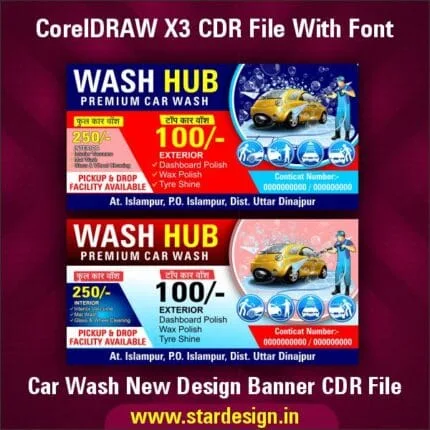



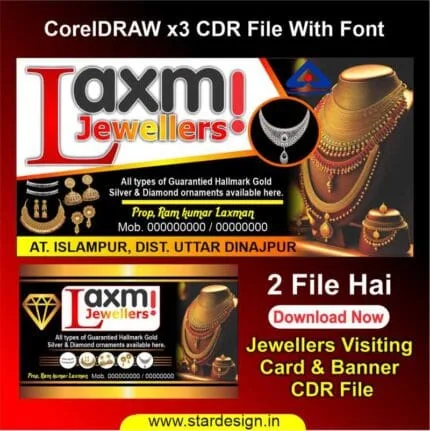
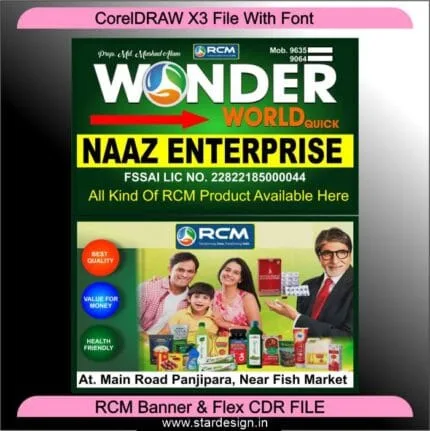
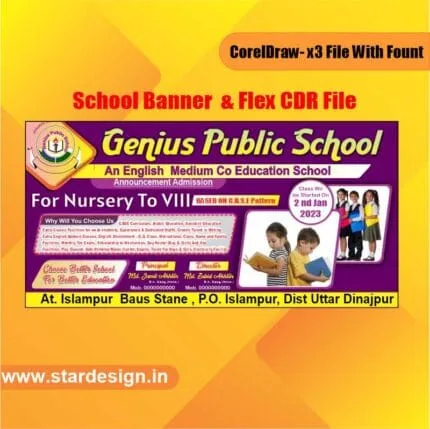


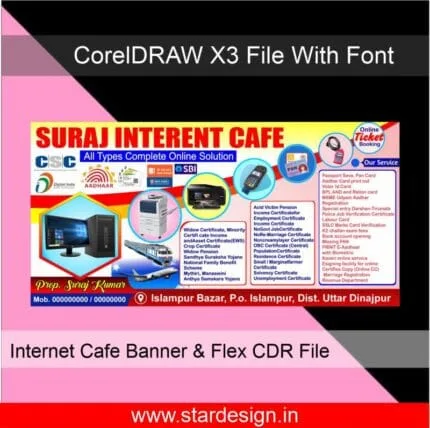
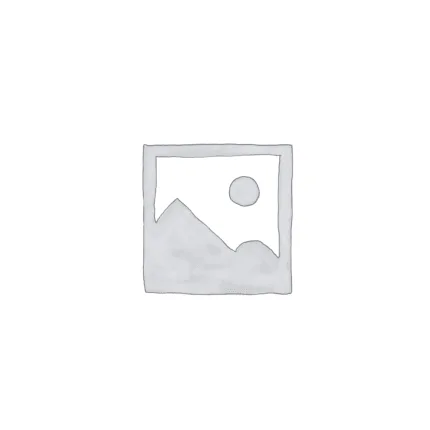
Reviews
There are no reviews yet.